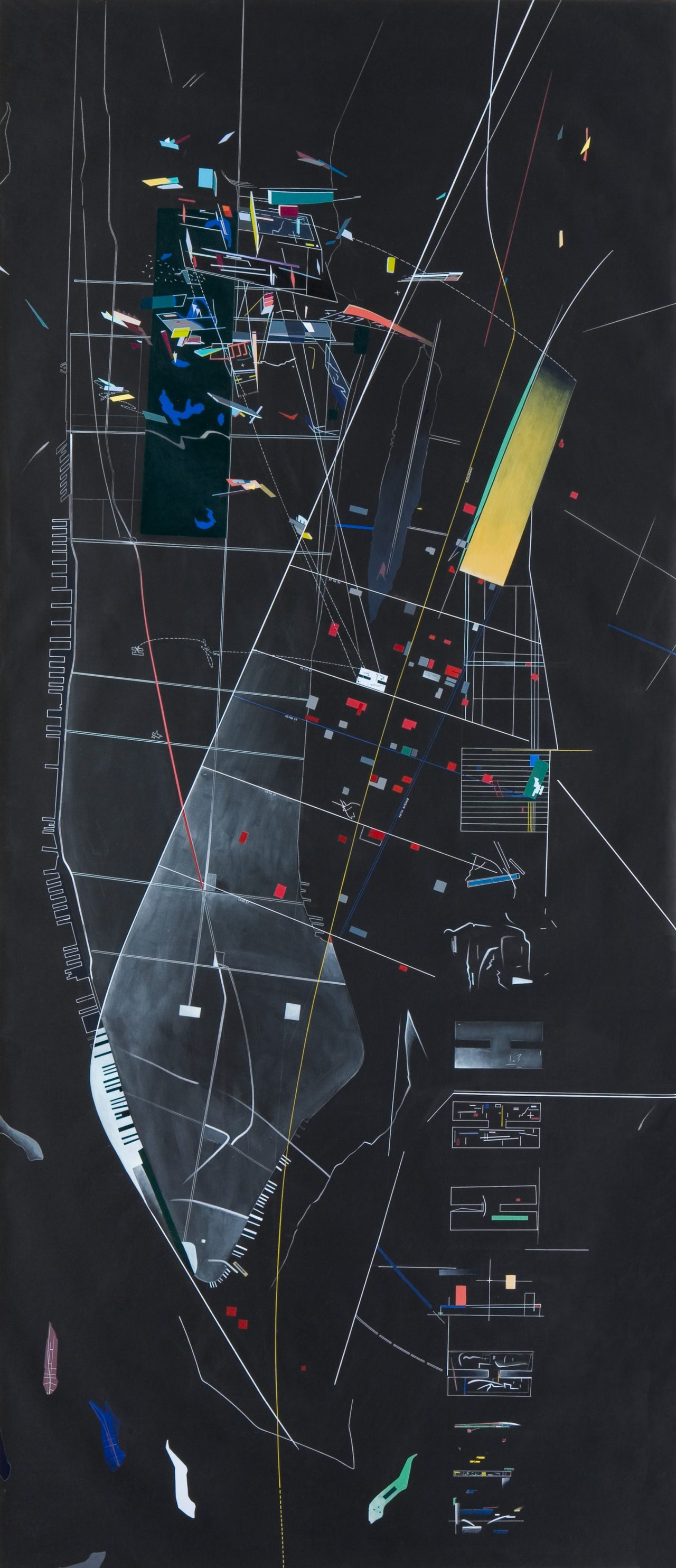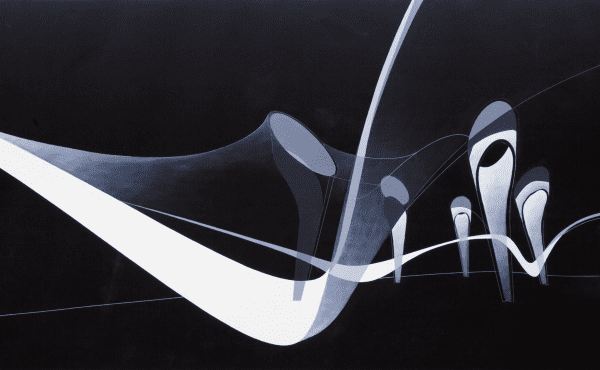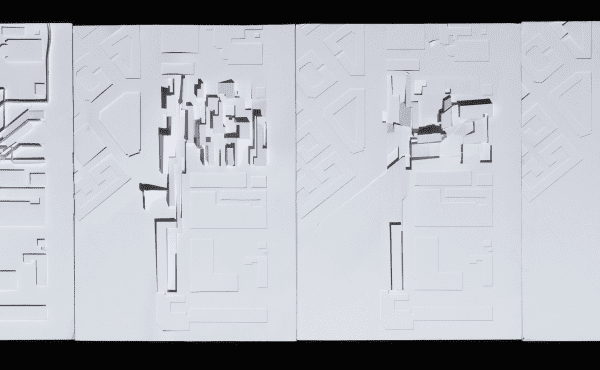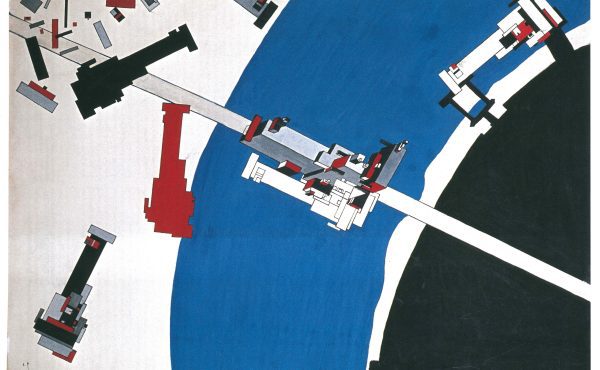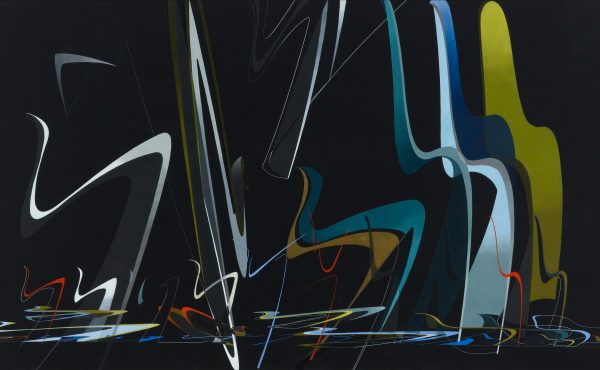On New Years Eve, 1986, Zaha Hadid met with hotelier Ian Schrager to discuss a proposed renovation of New York’s Century Paramount Hotel. In the following weeks, Hadid dedicated a sketchbook to transforming the châteauesque building near Times Square, with its distinctive H-shaped floorplan, into a contemporary boutique hotel through an imagined series of ‘confined explosions’. The interior was radically recomposed to accommodate a youth hostel, penthouse, pivoting beds, screening rooms and a pool suspended over the lobby, calling to mind the spatial and programmatic configuration of her Tektonik Hotel a decade earlier. While the commission was ultimately given to fellow architect Philippe Starck, Hadid’s experiments with the Century Paramount continued to evolve into a broader reconceptualisation of metropolitan living at the end of the 20th century, culminating in this towering painting, New York, Manhattan: A New Calligraphy of Plan.
The impetus for the painting arose in early 1987 when Hadid was invited to participate in Corbu vu par… (Corb seen by…), an exhibition in Paris that year organised by the Institut français d’architecture and the Fondation Le Corbusier. Asked to respond to a work of the pioneering modernist, Hadid selected a Christmas card sketched by Le Corbusier in 1951 depicting a seemingly hollowed out Manhattan;, its existing plan replaced with a uniform pattern of slabs and blocks. Composing the painting to the maximum dimensions afforded by the exhibition stand, Hadid’s contribution rejected what she saw as Le Corbusier’s ‘carpet of bland modernism’ and articulated her own vision, where small architectural explosions could take place across New York’s dense urban grid to redefine the intensity of the city through the injection of new, socially transformative programmes.
The painting transposes Hadid’s Century Paramount sketches onto superimposed maps of Manhattan, appearing in plan and section as well as erupting above the city’s surface. Dashed pathways, warped figures and colour gradations emphasise the dynamism and transience of her intervention within the ever-changing metropolis, exerted as a calligraphic fragmentation of its formal conditions. Looking ahead in time and space beyond the ‘H’ of the hotel, a spread of coloured blocks mapped around Broadway suggests further sites ripe for new energy and release.
